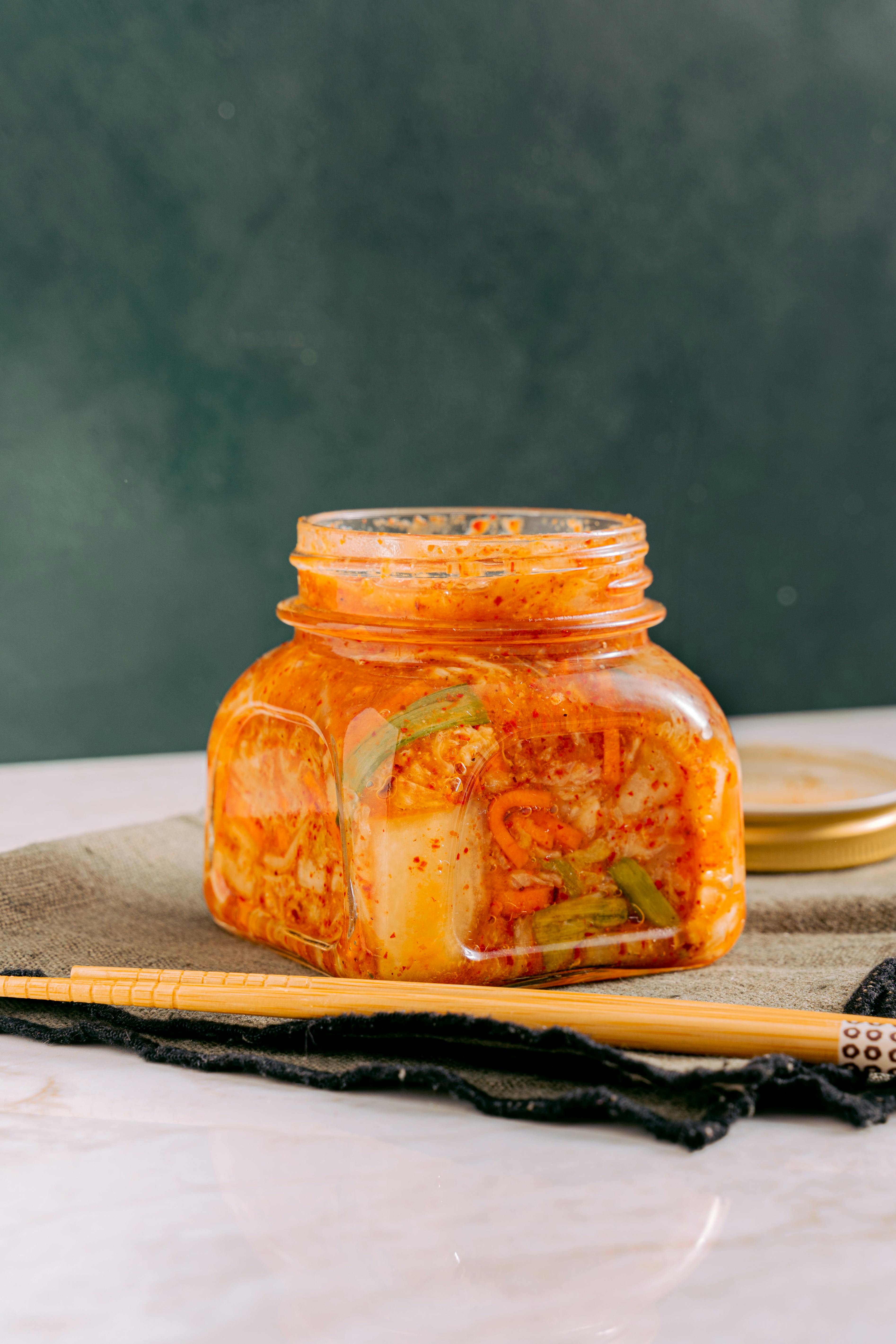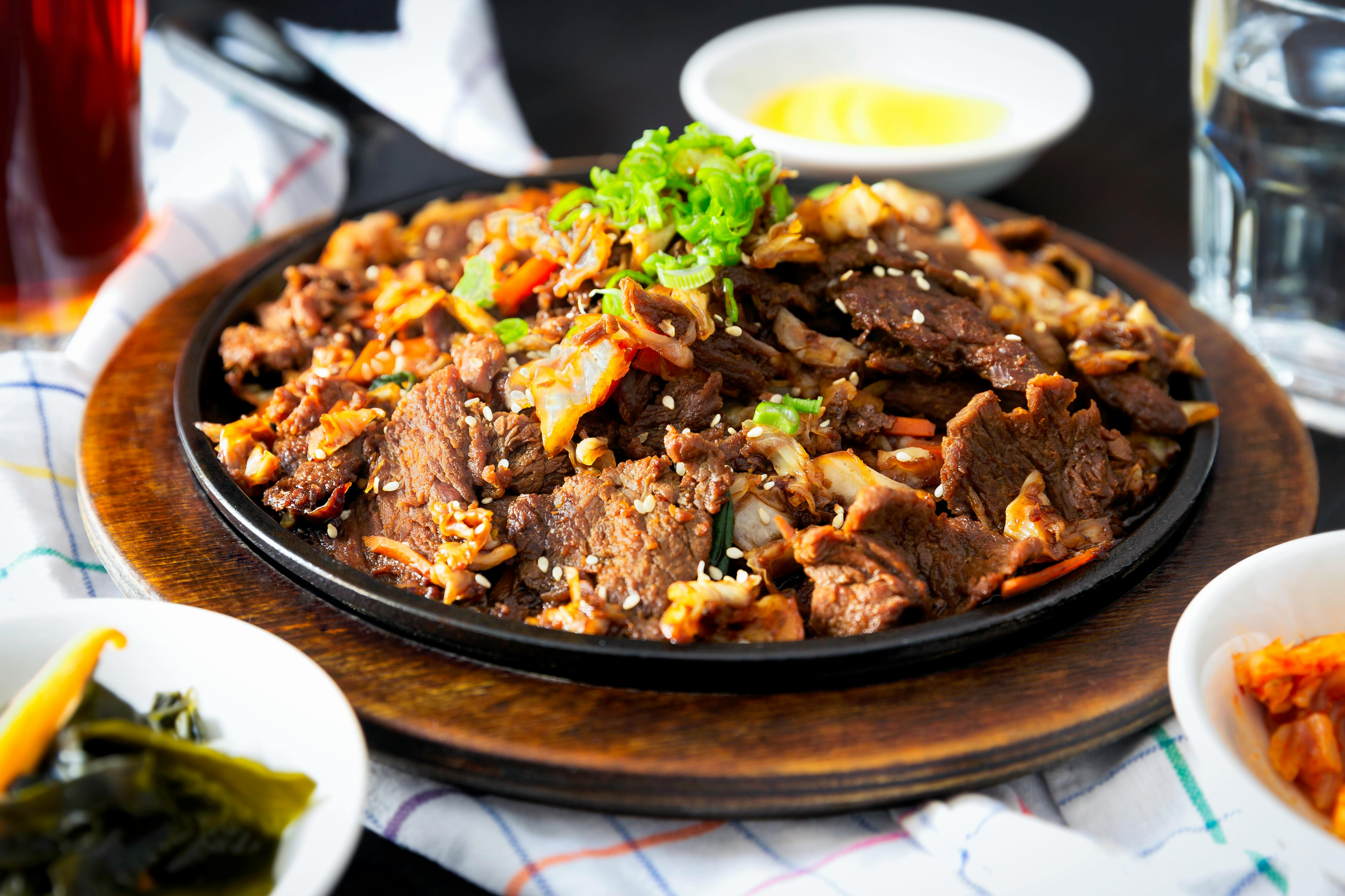In the world of Korean cooking, chefs are going beyond the familiar confines of kimchi to explore the wonders of fermentation. From pickles to sauces and even beverages, fermentation is being embraced as a powerful technique to enhance flavors and create unique dining experiences. As chefs continue to experiment with different fermentation methods and ingredients, they are uncovering a whole new world of possibilities in Korean cuisine. Join us as we take a closer look at how chefs are pushing the boundaries and redefining the role of fermentation in Korean cooking.

Introduction to fermentation in Korean cooking
Fermentation is an integral part of Korean cuisine, playing a vital role in creating the distinct flavors and textures that Korean dishes are known for. It is a traditional method of food preservation that has been used for centuries, allowing Koreans to enjoy a variety of foods all year round. In recent years, there has been a resurgence of interest in fermentation techniques, with chefs exploring new and innovative ways to incorporate fermentation in modern Korean culinary practices.
Importance of fermentation in Korean cuisine
Fermentation is deeply rooted in Korean culinary traditions, and its importance cannot be overstated. It not only adds depth and complexity to dishes but also enhances nutrient absorption, promotes gut health, and boosts the immune system. Fermented ingredients are a staple in Korean households, with each region boasting its own unique fermented specialties. The art of fermentation has been passed down through generations, preserving cultural heritage and culinary traditions.

Traditional use of fermentation in Korean dishes
Korean cuisine showcases a wide array of fermented ingredients, each bringing its own distinct flavor and aroma to dishes. One such ingredient is gochujang, a fermented red chili paste that forms the base of many Korean dishes. It is made by combining fermented soybeans, chili powder, and glutinous rice. Doenjang, another staple, is a fermented soybean paste that is used as a seasoning in soups, stews, and marinades. Ganjang, the traditional Korean soy sauce, is made through a long fermentation process and is key in many Korean dishes.
Aside from these well-known fermented ingredients, there are also lesser-known jangs, or fermented condiments, that bring unique flavors to Korean cuisine. These include cheonggukjang, a pungent fermented soybean paste, and chunggyeongjang, a soybean paste aged for three years for a deep and rich flavor. Fermented seafood, such as jeotgal (fermented salted seafood) and gyeranjjim (fermented salted eggs), are also common in Korean cooking, adding a rich umami taste to various dishes.
Rise of fermentation techniques in modern Korean culinary practices
While traditional fermentation methods remain at the heart of Korean cooking, there has been a recent surge in the exploration and experimentation of fermentation techniques in the modern culinary scene. Chefs are increasingly incorporating fermentation into their creations, combining traditional methods with modern cooking techniques to create unique and exciting flavors.

Exploring different fermented ingredients
Korean cuisine offers a diverse range of fermented ingredients, each contributing its own distinctive taste and aroma to dishes. Gochujang, the fermented red chili paste, is a staple in Korean households and is used as a base for many dishes. Its complex and spicy flavor adds a delightful kick to soups, stews, and marinades. Doenjang, the fermented soybean paste, is another fundamental ingredient in Korean cooking. Its rich and savory taste enhances the flavors of various dishes, particularly soups and stews. Ganjang, the traditional Korean soy sauce, is made through a long fermentation process and adds depth and umami to a wide range of Korean dishes.
Innovative fermentation methods in Korean cuisine
In addition to traditional fermentation methods, Korean chefs have been exploring and experimenting with innovative techniques to further enhance the flavors and textures of their dishes. Sous vide fermentation, for example, combines modern sous vide cooking with traditional fermentation to create unique flavors. This technique allows for precise temperature control and longer fermentation periods, resulting in nuanced and complex flavors.
Another popular method is koji fermentation, which utilizes the power of Aspergillus oryzae, a fungus commonly used in Japanese fermentation. Koji is used to ferment rice, barley, and soybeans, creating a rich and delicate flavor profile. It is often used as a starter culture in Korean cuisine, lending depth and complexity to various dishes.
Slow fermentation, on the other hand, allows flavors to develop over time, resulting in unique taste profiles and textures. This method is commonly employed in the production of fermented vegetables, such as kimchi, as well as fermented beverages like makgeolli.

Fusion of Korean and international flavors
The fusion of Korean and international flavors has become a popular trend in modern culinary practices, and fermentation plays a key role in creating these innovative and exciting dishes. One example is the fusion of Korean and Mexican cuisines in the form of fermented kimchi tacos. The tangy and spicy flavors of kimchi are paired with the richness of Mexican spices and condiments, creating a harmonious blend of flavors.
Korean-style sourdough bread is another example of fusion cuisine, where fermentation techniques from both Korean and Western bread-making traditions are combined. The use of fermented starters and longer fermentation periods results in a unique and flavorful sourdough bread that showcases the best of both worlds.
Fermented vegetable pickles are also gaining popularity as a tangy twist to international dishes. The incorporation of fermented vegetables, such as kimchi or pickled radishes, adds a burst of flavors and textures to salads, sandwiches, and even burgers.
Incorporating fermentation in desserts and sweets
Fermentation is not limited to savory dishes in Korean cuisine. Chefs are also exploring the use of fermentation in desserts and sweets, adding depth and complexity to traditional favorites. Fermented rice desserts, for example, offer creative twists on traditional rice cakes. The fermentation process adds a subtle tanginess and unique texture to these sweet treats, elevating them to new heights.
Fermented fruit preserves are another way to intensify flavors in desserts. By fermenting fruits, chefs are able to unlock new and complex taste profiles, adding depth and richness to jams, jellies, and marmalades.
Exploring beyond traditional yogurt, fermented dairy products are also making a mark in Korean desserts. From fermented milk ice cream to yogurt-based cakes, these innovative creations showcase the versatility of fermentation in creating delightful sweet treats.

Reviving forgotten fermentation techniques
As the culinary world evolves, there is a growing interest in reviving forgotten fermentation techniques in Korean cuisine. Many traditional fermentation methods have been lost over time, but chefs are leading the charge to rediscover and reinvent these practices, preserving cultural heritage and culinary traditions.
Through collaborations with local farmers and artisans, chefs are learning ancient fermentation techniques and working towards reviving them in their kitchens. By incorporating these traditional methods into their recipes, they are able to create truly unique and authentic dishes that pay homage to Korea’s rich culinary history.
Health benefits of fermented foods
One of the main reasons for the resurgence of fermentation in Korean cooking is the growing recognition of the health benefits associated with fermented foods. Fermentation introduces probiotics into our diet, which promote gut health and improve digestion. These live microorganisms aid in the breakdown of complex nutrients, making them more easily absorbable by the body.
Fermented foods also enhance nutrient absorption, as the fermentation process breaks down complex compounds into simpler forms that our bodies can readily utilize. This results in increased bioavailability of essential nutrients such as vitamins and minerals.
Furthermore, consuming fermented foods has been linked to a reduced risk of chronic diseases, including heart disease, diabetes, and certain types of cancers. The beneficial compounds produced during the fermentation process, such as antioxidants and antimicrobial substances, help protect the body against oxidative stress and inflammation.
Lastly, fermented foods are known to boost the immune system. The probiotics present in fermented foods support the growth of beneficial bacteria in the gut, which plays a crucial role in maintaining a healthy immune response.
Challenges and considerations in fermenting beyond kimchi
While fermentation offers a world of culinary possibilities, there are certain challenges and considerations that chefs must take into account when exploring fermentation beyond kimchi.
Balancing flavors and textures is key in creating successful fermented dishes. Fermentation can intensify flavors and transform textures, and finding the right balance requires careful experimentation and tasting. Over-fermentation or under-fermentation can greatly affect the final outcome of a dish, so precise control of fermentation conditions is essential.
Food safety and hygiene practices are of utmost importance when fermenting foods. The fermentation process creates an environment conducive to the growth of bacteria, both beneficial and harmful. It is crucial to follow proper sanitation practices and ensure that the fermentation vessel and ingredients are clean to prevent contamination and foodborne illnesses.
The tension between cultural authenticity and experimentation is another consideration when fermenting beyond kimchi. While it is exciting to explore new flavors and techniques, it is also important to respect and preserve the cultural heritage and traditions associated with fermentation in Korean cuisine. Chefs must strike a balance between innovation and honoring the roots of Korean culinary practices.
Accessibility of ingredients and equipment can also pose challenges when fermenting beyond kimchi. Some fermented ingredients, such as jangs or fermented seafood, may not be readily available in certain regions. Additionally, specialized fermentation equipment and starter cultures may not be easily accessible to everyone. Chefs must adapt and find alternatives while still achieving the desired fermentation results.
The role of fermentation in preserving and sustainable cooking
Fermentation plays a significant role in preserving and sustainable cooking practices. By fermenting foods, chefs are able to prolong their shelf life and reduce food waste. This is particularly important when dealing with seasonal produce, as fermentation allows for the preservation and enjoyment of fruits and vegetables throughout the year.
Utilizing seasonal produce with fermentation not only reduces food waste but also supports local farmers and reduces the carbon footprint associated with long-distance transportation of produce. By incorporating fermentation techniques, chefs can highlight the natural flavors of locally sourced ingredients and promote sustainable and environmentally conscious cooking practices.
Fermentation also promotes self-sufficiency and traditional food preservation techniques. By mastering fermentation skills, individuals can take control of their food production, reduce reliance on processed foods, and contribute to a more sustainable and resilient food system. It allows for the preservation of traditional culinary techniques and ensures the continuation of cultural heritage for future generations.
Conclusion
Fermentation is a dynamic and evolving aspect of Korean cuisine that continues to capture the attention of chefs and food enthusiasts around the world. From traditional fermentation techniques to innovative methods, fermentation offers endless possibilities to explore flavors, textures, and culinary creations beyond the iconic kimchi.
Chefs are pushing the boundaries of fermentation, combining traditional methods with modern techniques to create exciting fusion dishes that blend Korean and international flavors. The health benefits associated with fermented foods further contribute to the popularity of fermentation in modern cooking practices.
As chefs explore fermentation beyond kimchi, they face challenges in balancing flavors, ensuring food safety, and preserving cultural authenticity. However, these challenges are met with enthusiasm and dedication to create unique dishes while honoring the rich culinary heritage of Korea.
Fermentation also plays a significant role in preserving and sustainable cooking practices by reducing food waste, utilizing seasonal produce, and promoting self-sufficiency. It allows for the continuation of traditional food preservation techniques and preserves cultural heritage for future generations.
In conclusion, fermentation in Korean cooking is a journey of endless possibilities, continuous innovation, and respect for culinary traditions. By embracing fermentation, chefs and food enthusiasts alike can embark on a flavorful adventure that celebrates the past, present, and future of Korean cuisine.
